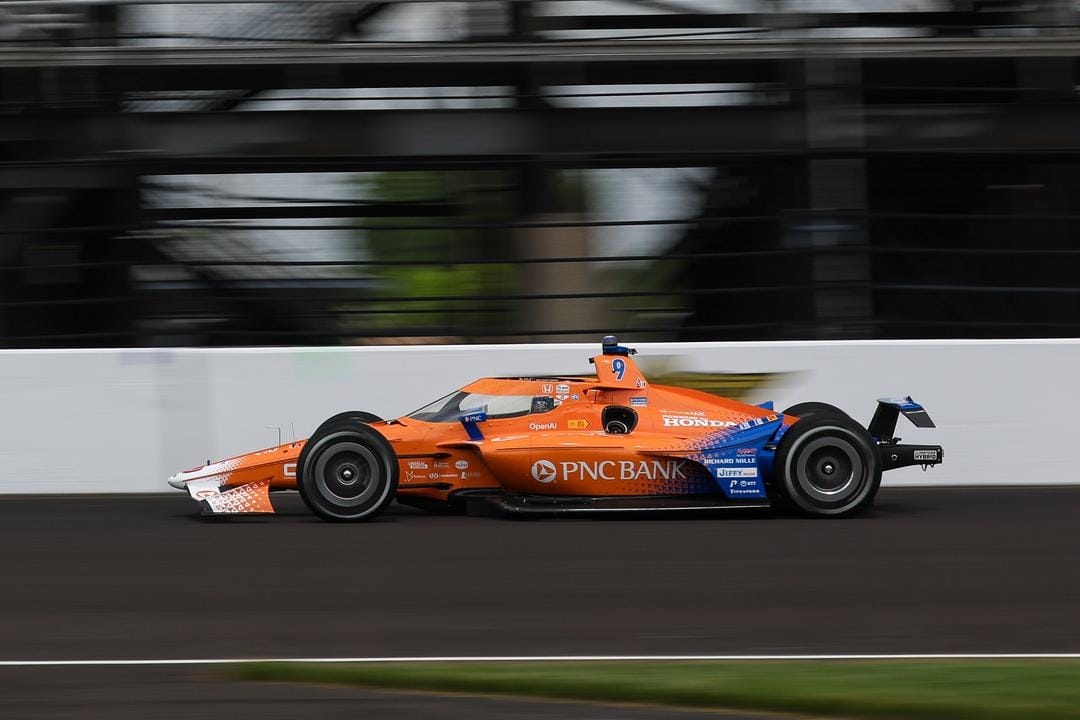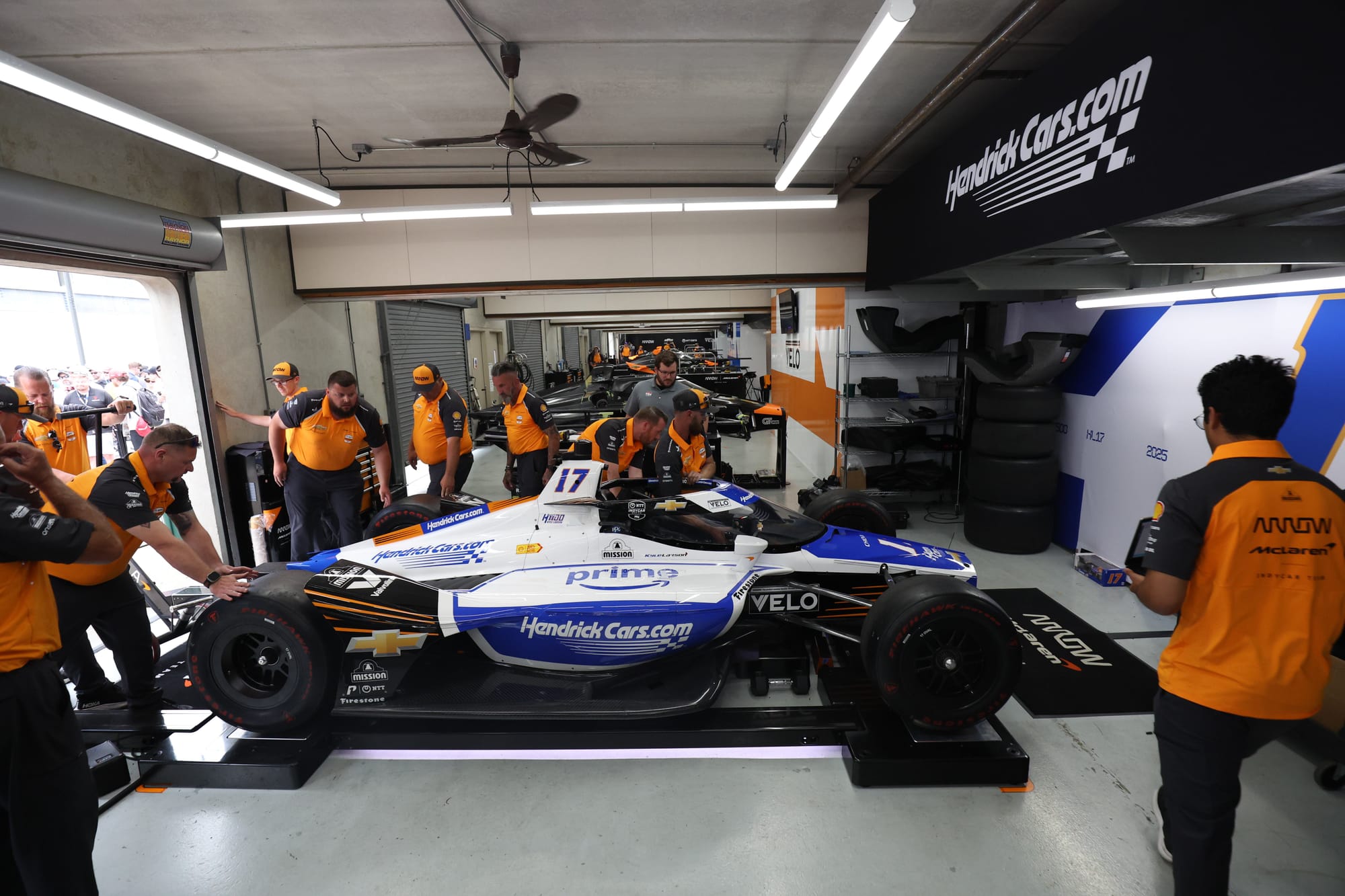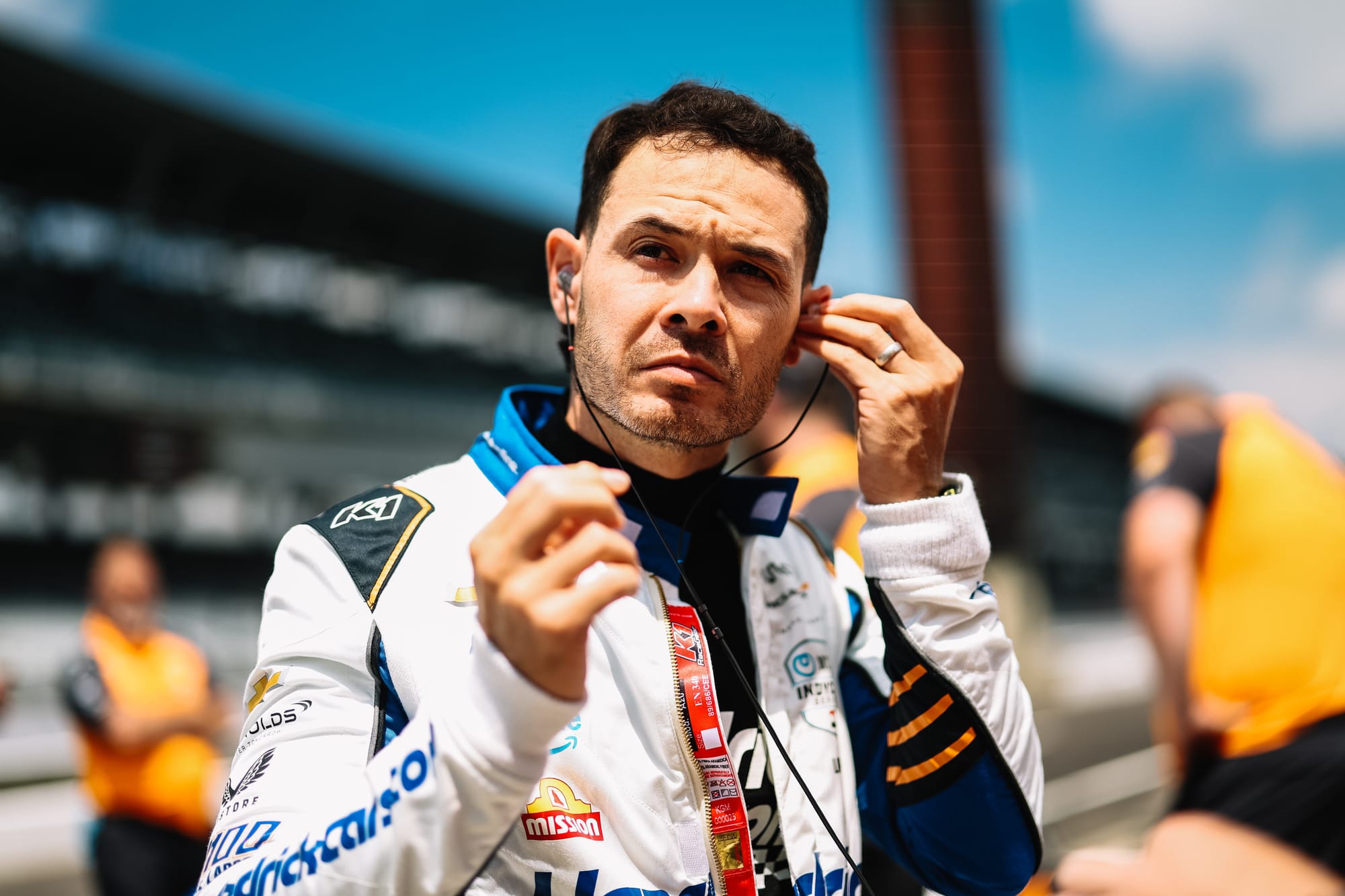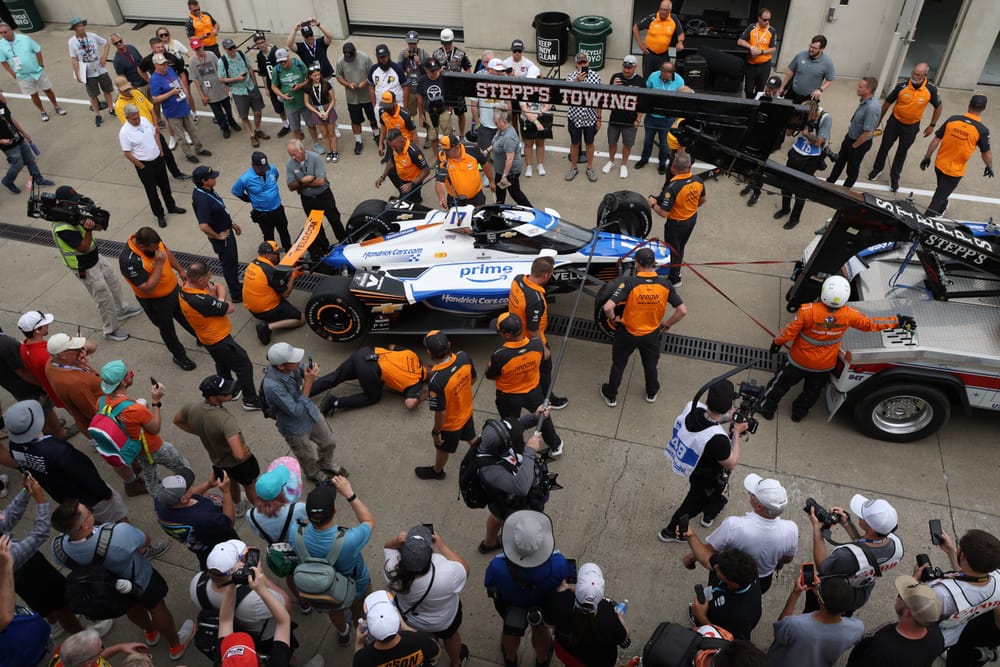The first two crashes of the week headlined what was arguably one of the toughest Fast Fridays in recent memory as wind and high track temperatures wrought havoc with IndyCar drivers' and teams' main Indianapolis 500 qualifying preparation day.
Over the next two days, a pole winner will go down in the history books and one driver and team will fail to make the race.
Here's what we learned from a really, really tough day of on-track action at the Indianapolis Motor Speedway with the boost turned up ready for speeds of 240mph+.
What does the leaderboard look like?

A combination of the highest track temperature recorded since records began in 2015 and enormous wind gusts made the track very treacherous. It also makes trying to compare times almost impossible given the varying temperatures and wind speeds sometimes changing as often as lap to lap through the day.
With four hours gone, nearly half the field hadn’t even set a four-lap average and many cars stayed in the pits anticipating cooler temperatures on Saturday and not wanting to risk damaging their cars. The high temperature especially was the biggest reason for trepidation.
Car after car aborted runs, even the Penske cars which have been the class of the field through practice so far, with all three of its drivers aborting at least one run.
Scott McLaughlin - the 2024 pole winner - did piece together a 232.212mph average early on to go well clear at the top of the field and that time comfortably lasted all day. But there's a catch - it's possible he got a bit of a tow during the run.
Until late improvements with much cooler temperatures, Scott Dixon was second with a 230.761mph, albeit his lap was set in what I think most people would agree were even worse conditions, and without a tow.
The last hour provided cooler temperatures that really messed up comparisons in the order.
Four-lap average times from Friday
1 Scott Dixon 232.366mph
2 Alex Palou 232.307mph
3 Scott McLaughlin 232.212mph
4 Colton Herta 231.721mph
5 Kyle Kirkwood 231.491mph
6 Felix Rosenqvist 231.239mph
7 Christian Lundgaard 231.083mph
8 Robert Shwartzman 231.077mph
9 Sting Ray Robb 230.862mph
10 Marcus Ericsson 230.620mph
Alex Palou came out to run four laps in the 232mph range to set the fastest four-lap average of the day, with a host of other cars jumping up late on, including Dixon who jumped to the top of the order in a Ganassi 1-2.
Andretti pair Colton Herta and Kyle Kirkwood fancy themselves to be in contention for pole and the win and took fourth and fifth.
Ganassi-affiliated Meyer Shank looked strong with Felix Rosenqvist ahead of McLaren's lead driver Christian Lundgaard.
One of the stars of the show today was Prema and its rookie Robert Shwartzman. The team failed to get its cars ready for the start of practice on Tuesday but that didn’t matter because there’s plenty of speed in the car.
Shwartzman delivered the fourth-best four-lap average inside the last hour, his run set in better conditions but others around him also ran in the same period.
Sting Ray Robb showed it's not just Conor Daly running well for Juncos Hollinger and was ninth ahead of Marcus Ericsson.
Remember, the overall one-lap times don't really matter here as we're looking at a four-lap average in qualifying, and comparing the times today needs to be done with the conditions in mind.
A star name crashes

With an hour and 30 left on the clock, Kyle Larson proved just how difficult the conditions were by crashing nose-in to the barrier at Turn 4 after losing the car at Turn 3. It was his first run of the day over four hours into the session, and robbed others of the track time from the clean-up too.
Kyle Larson goes around and into the wall at #Indy500 practice. pic.twitter.com/UjkHctURKk
— INDYCAR on FOX (@IndyCarOnFOX) May 16, 2025
Turn 3 was the toughest on the track all day because of a tailwind increasing speeds already over 230mph, and with unpredictable gusts you could be arriving much quicker at the apex than you anticipate or can control.
His car didn’t appear to be too badly damaged but that’s from a cursory glance at the TV and the McLaren team will need to do a deep-dive into its condition.
“Just had a lot of front grip there in 3, just kind of bit and felt it come around,” Larson told Fox.
“It comes around quick once it does that. So, bummer, but it is what it is.

“I’m not too worried about it, I think we’ll be fine. Adjust on it a little bit, track conditions will be better tomorrow, we’ll still be fast.”
He added: “I tend to get over things pretty quickly. I know I spun, but my balance felt pretty close to being good. Just work on it a little bit and we’ll be good.”
After watching the crash above, prepare to be blown away. The car was back on track in less than an hour!
Kyffin Simpson had also crashed earlier in the day for Ganassi.
Kyffin Simpson gets some air after hitting the wall. #Indy500 pic.twitter.com/ieEEOULRW7
— INDYCAR on FOX (@IndyCarOnFOX) May 16, 2025
How qualifying works
Drivers will take turns to qualify in the order of the aforementioned draw, one at a time, until everyone has had a chance to do a four-lap run. The average speed over those four laps is taken for each driver and that decides the order.
If a driver wants to have a go at improving their time once all the other cars have gone, there is a queue system to decide how you get on track.
In 'line 1', the left lane, the high risk. You withdraw your previous time and whatever your new time is that’s what you have. So if you go slower or even worse, crash, you have no fallback option and you can tumble down the order.
The safer line is the right lane, labelled 'line 2'. Its downside is, you have to wait until all the cars in the right lane have run before you get to go on track, so you face running out of time. The good news about this is that if you crash or go slower, your previous lap stands.
The drivers that are 13th-30th at the end of the day are done and that’s where they’ll start the race.
The drivers 1st-12th on Saturday go through to Sunday where they compete to become a Fast Six, and that six goes on to fight for pole.
In both of those sessions, drivers only get one chance to run, second runs aren’t permitted.
Also on Sunday is Last Chance Qualifying, known to most people as Bump Day because one car will be bumped from the grid. That driver and team will go home and won’t race in the Indy 500.
Qualifying schedule
Saturday May 17
Practice - 0830-0930
Qualifying - 1100-1750 (1600-2250 UK)
Sunday May 18
Practice - 1300-1500 (1800-2000 UK)
Top 12 qualifying - 1605-1705 (2105-2205 UK)
Last Chance qualifying - 1715-1815 (2215-2315 UK)
Fast Six qualifying - 1825-1855 (2325-2355 UK)
What is the draw
Every year, at the end of Fast Friday, a draw is held to decide what order people qualify in.
The best time to qualify is earlier in the day when it's cool and the track temperature hasn't risen to a point where the tyres suffer over a run.
That means an early draw is really, really valuable. And a lower draw is really, really bad.
This year's draw
1 Marcus Ericsson
2 Pato O'Ward
3 Kyffin Simpson
4 Robert Shwartzman
5 Alexander Rossi
6 Ryan Hunter-Reay
7 Jack Harvey
8 Christian Lundgaard
9 Marcus Armstong
10 Graham Rahal
11 Nolan Siegel
12 Conor Daly
13 Felix Rosenqvist
14 Scott Dixon
15 Colton Herta
16 David Malukas
17 Santino Ferrucci
18 Will Power
19 Kyle Larson
20 Helio Castroneves
21 Takuma Sato
22 Ed Carpenter
23 Marco Andretti
24 Jacob Abel
25 Alex Palou
26 Louis Foster
27 Scott McLaughlin
28 Sting Ray Robb
29 Christian Rasmussen
30 Kyle Kirkwood
31 Devlin DeFrancesco
32 Callum Ilott
33 Josef Newgarden
34 Rinus Veekay



